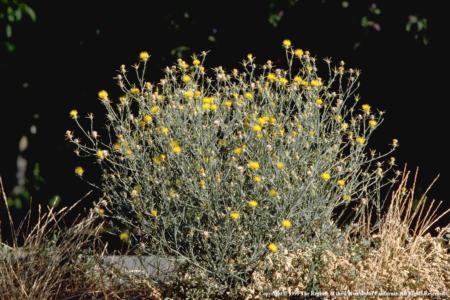
Posts Tagged: yellow starthistle
California budget cuts impact yellow starthistle control

The project was funded by the state Department of Food and Agriculture as part of its weed control budget totaling $2.7 million in 2011. That money was cut from the 2011-2012 state budget cycle. Local and federal grants that kept the program going will run out next month. A $314,000 grant from the Sierra Nevada Conservancy was denied because the group failed to meet the application requirements, the article said.
These developments may give starthistle a bigger hold on California wildland. The roots of the nuisance weed grow as much as six feet deep to find moisture.
"It would be as if these areas are experiencing drought because of the amount of water it uses," said Joe DiTomaso, UC Cooperative Extension specialist in the UC Davis Department of Plant Sciences. DiTomaso is a leading expert on starthistle.
The Leading Edge Project started about a decade ago with a mapping effort to find out just how much of the state was infested with starthistle, and where it was spreading, said Wendy West, the project's coordinator and a University of California Cooperative Extension program representative based in Placerville.
"It felt like such a losing battle that we really needed to prioritize what we could do and how we could be successful," West said.
"I've personally pulled plants at 7,000 feet in Alpine County," West said. "It may not move quite as fast, but yellow star thistle is a really good example of a plant that can adapt to new locations easily."
Ukiah reporter steers readers to UC weed expertise
Reporter Carol Brodsky of the Ukiah Daily Journal suggests most readers are familiar with yellow starthistle, a noxious weed thought to have been introduced from Chile more than 100 years ago. Though yellow starthistle is controlled by a variety of insects and competitive weeds in its natural habitat, in California people are its primary enemy.
And yellow starthistle is a formidable foe. It can grow six feet tall and as much around. The flowers are beautiful, but surrounded by sharp, one-inch-long spikes.
John Harper, the UC Cooperative Extension livestock and natural resources advisor in Mendocino County, told the reporter that the plant has features that make it especially hard to eradicate.
"Starthistle has two seeds. One is hard coated and the other is soft coated. The soft coated seeds sprout instantly, and the hard coated seeds wait for the late-season rains," Harper was quoted.
The plant contains a neurotoxin which can be deadly to horses. Fortunately, most horses find starthistle unpalatable. However, other animals are unaffected. Harper suggests the best method to eradicate the weed is running sheep and goats on the property.
There is a silver lining to the weed's introduction to California: Yellow starthistle is considered an important source of the state's honey.

Yellow star thistle.